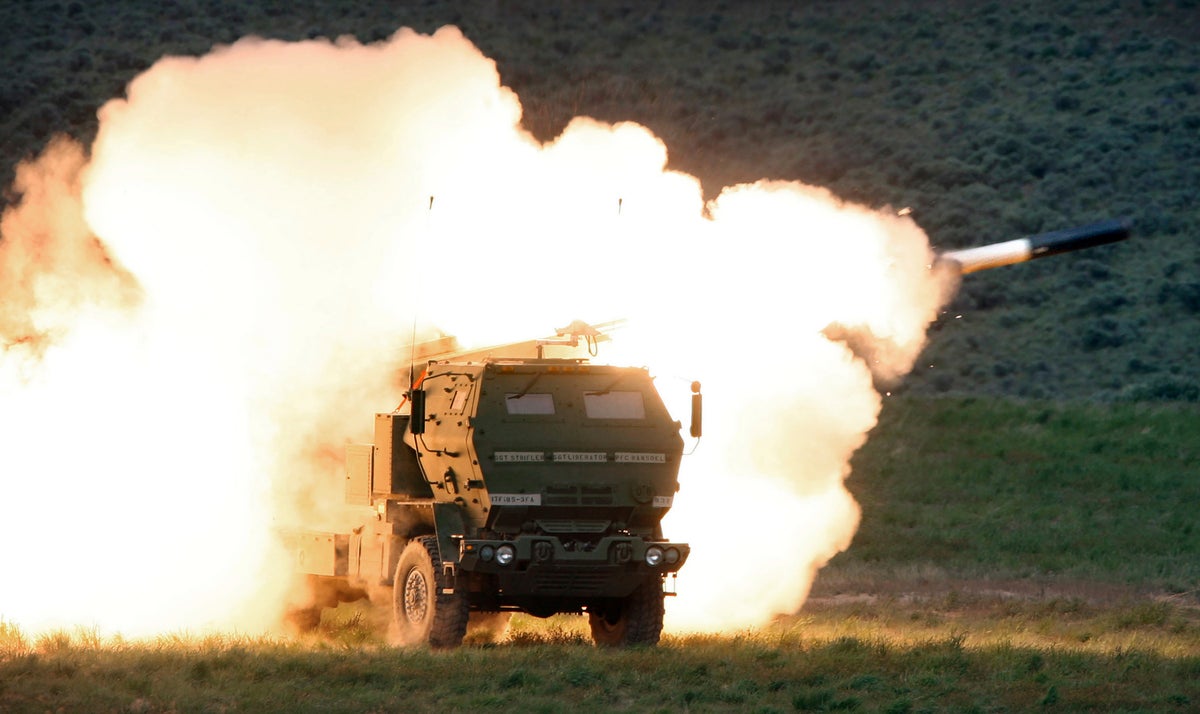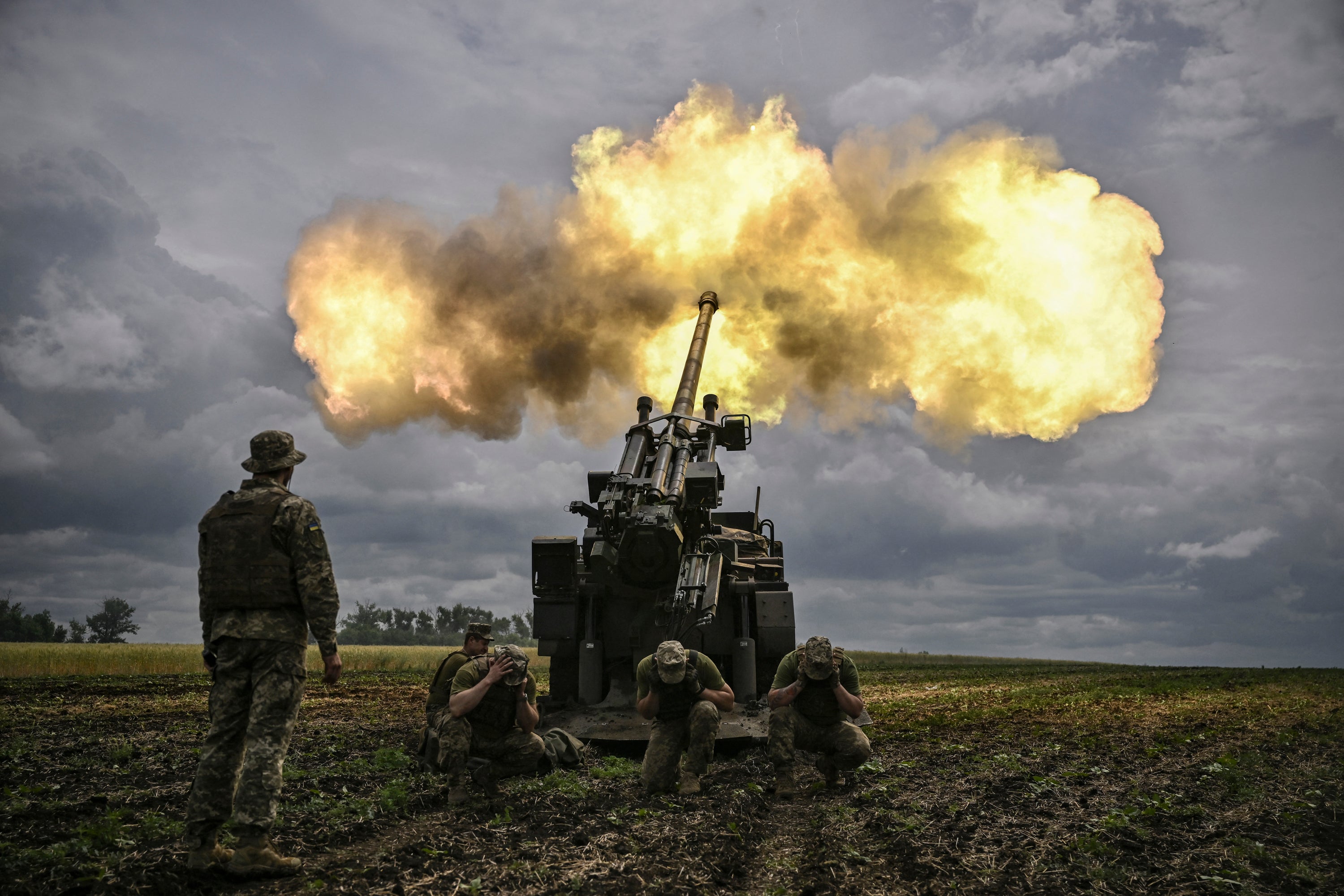
A US-made mobile artillery system is being used to devastating effect by Ukrainian forces in the fight against Russia’s invasion. So much so that Ukraine has asked for dozens more to potentially turn the tide of the war.
The High Mobility Artillery Rocket System (HIMARS), a truck-mounted rocket launcher, has wreaked havoc on Russian positions far behind the frontlines, destroying command posts and ammunition depots, according to US and Ukrainian military officials.
Ukraine’s defence minister, Oleksii Reznikov, said in televised remarks on Monday that his country’s forces have used the rocket system to destroy more than 50 Russian ammunition depots since receiving them from the US last month. Reports from commanders on the ground suggest they have played a part in stalling Russia’s advance in the Donbas region.
The first HIMARS were delivered to Ukraine in June, at a time when Ukrainian forces were suffering heavy casualties in Donbas. The Pentagon announced the delivery of four more systems on Friday, bringing the total number to 16. The US has also trained some 200 Ukrainians to operate them.
The HIMARS gives Ukrainian forces the ability to fire rockets faster and with more precision than it has ever done before. The truck-mounted launchers fire GPS-guided missiles that can hit targets 50 miles away. The trucks they are fired from are nimble and hard to spot, which makes them hard for Russia to destroy.
Their success has been touted by both Ukrainian and American military leaders. In a Pentagon briefing call with reporters last week, a senior US defence official said that the Ukrainians were “employing very precise, very accurate targeting of critical Russian positions with their HIMARS”.
A senior US military official, during the same briefing, called HIMARS “the most hunted things in all of Ukraine” due to their effectiveness in disrupting Russian operations.
“The Ukrainians are good. Right now they’re having a really significant effect on the Russians’ ability to prosecute operations,” the official told The Independent.
“The Ukrainians have concentrated a great deal of effort on [targeting] the Russian command and control, their logistic supply areas, to include all sorts of classes of supply, in particular ammunition,” they added.
The attacks on command centres have been particularly devastating to Russia’s current offensive in Ukraine’s southeast, the official added.
“We know from the way that the Russians fight that they need someone to tell them what to do. When you are able to kill the people that tell them what to do, you’re able to stop those folks from moving forward. And we continue to see that,” the official said.
“We are seeing indications that the Russians are trying to adjust for the effect that the HIMARS are having on them,” they added.
Since Russia invaded its neighbour on 24 February this year, the supply of western weapons has been crucial to Ukraine’s defence. During the battle for the capital Kyiv, when Russian ground forces made repeated attempts to encircle the city and decapitate Ukraine’s government, it was the US-made Javelin and UK-made Next generation Light Anti-Tank Weapon (NLAW) which helped turn the tide.

When Russia abandoned its push on Kyiv and concentrated all of its forces in the southeast, attempting instead to capture the Donbas region, it once again held an advantage. The battle was dominated by artillery, for which Russia had more sophisticated systems and ammunition.
Ukrainian casualties mounted quickly. At the beginning of June, a senior Ukrainian presidential aide, Mykhailo Podolyak, told the BBC that between 100 and 200 Ukrainian troops were being killed on the Donbas front line every day.
That changed when the first shipment of HIMARS arrived in Ukraine.
Rob Lee, a senior fellow at the Foreign Policy Research Institute (FPRI) and former US marine who tracks Russian equipment losses, described the HIMARS as an “extremely accurate weapons system” that has played a key role in reducing Russia’s artillery advantage.
“It’s a lower risk for being targeted by Russian artillery because you can operate them at nighttime, you don’t have to have [unmanned aerial vehicles] to observe the target, and you can do an assessment afterwards,” he told The Independent.
The first video of the HIMARS in action in Ukraine was posted on 24 June, he said. Since then, videos of ammunition depots being struck by HIMARS have been “an almost daily occurrence”, he added.
“The Ukrainians have said the Russians are firing far less artillery ammunition as a result. That reduction gives Ukrainian ground forces a better chance of defending their positions,” he said.
The result is that “there hasn’t been much in the way of Russian gains” over the last three weeks, Mr Lee added.
The question that remains is whether the HIMARS will be sufficient for Ukraine to launch a counteroffensive. Mr Reznikov said in a video appearance at the Atlantic Council earlier this month that his forces would need dozens more to achieve that goal.
“For an effective counteroffensive, we need at least 100,” he said, according to The Washington Post. “That would be a game changer.”
The United States has so far sent around $8.2bn (£6.8bn) worth of weapons and support to Ukraine during President Joe Biden’s administration. The latest package includes about $175m (£146m) in equipment pulled from existing US military stocks, the Pentagon said on Friday.
While Ukrainian officials are currently clamouring for HIMARS and other similar systems, Mr Lee says they may find themselves adapting to yet another shift in the environment should Ukraine want to go on the offensive.
“It’s important to keep in mind that there aren’t any wonder weapons. HIMARS have been very effective in the last month, but Russia will adapt,” he said.
To take territory, he added, Ukraine will require a new set of skills and equipment.
“They need tanks, they need [unmanned aerial vehicles] they need enough artillery ammunition, they need to be able to suppress targets and units are trained well enough to do combined arms operations.”
“HIMARS by itself is not enough,” he added. “You need other ingredients to conduct an offensive operation effectively.”







